|
From Historian and Author : Angelo Bissessarsingh
For most Trinidadians, no Christmas season would be complete without a shopping trip to take advantage of bargains, window-shop and to savour the whirl and rush of humanity occasioned by the hectic Christmas atmosphere. The hams have begun to put in appearances in the supermarket freezers, and the ruddy hue of sorrel on the wooden trestles of roadside hucksters. Demijohns of ginger ale have begun to grace windowsills for fermentation, and notwithstanding the astronomical price of the raw material, most assuredly will give a sharp bite to those who dare to partake of the aged vintage. Errant bakers of the domestic kitchens are sampling with gusto the rum-drenched dried fruit which have been soaking since the middle of June and which will soon form an integral part of an aromatic fruit cake. Toys which range from the simple trinkets of a bygone era to complex mechanisms with embedded microchips have commenced their temptation of young desires who fervently hope that Santa will bestow upon them, the rewards of a year of good behavior. Amidst the thick air of anticipation and festivity it would not be amiss to take a retrospective look at local Christmases of yesteryear. Almost every nostalgic Trinidadian and Tobagonian can tell stories of the ham being boiled in a pitch-oil tin, the flurry of new curtains, paranderos and the joyous tedium of pastelles on the make, but I intend to take a more historically systematic view when looking at the Trini Christmases Past. With the advent of East Indian labourers on the sugar and (to a lesser extent) cocoa estates of the island after 1845, Christmas took on a dimension of minor importance. Mostly, the labourers were Hindus and Muslims and therefore did not celebrate Christmas. Admittedly, some aspects of the field slave Christmas still survived as 19th century accounts tell of one proprietor’s wife in Central Trinidad, Elisa DeVerteuil, sharing out an annual bonus of flour, cloth and other staples to the East Indians of Woodford Lodge Estate. The arrival of Rev. John Morton in 1868 marked the commencement of the Canadian Mission to the Indians (CMI) through the auspices of the Canadian Presbyterian Church. Under the influence to the early missionaries of the CMI, Christmas became a more regular occurrence in the predominantly Indo-Trinidadian sugar-belt communities of Central and South Trinidad. Those early CMI Christmases were simple affairs, with carols being sung (some in Hindi through the translations of the Rev. Dr. Kenneth Grant and Lal Behari) and presents in the form of decorated cards and booklets being distributed, these being sent from mission fields in Canada for the benefit of their ‘heathen’ brethren in Trinidad. Conversely, as is recorded by Sir V.S Naipaul in A House for Mr. Biswas, Indo-Trinidadian Christmas celebrations in the estate barracks comprised for the most part of a surfeit of food and grog, after which a spate of wife and child beatings would inevitably follow to cap off Christmas Day revelries. Christmas for the urban Afro-Trinidadian, particularly for those of the barrack-yards of East Port of Spain, was a more complex affair although like their East Indian contemporaries, Yuletide activities invariably involved the consumption of copious libations of spirits, sometimes with unwelcome side-effects. The seminal thesis on life in the barrack-yards published by James Cummings (Barrack-Yard Dwellers) gives an insightful window into the Christmases of these unique inner-city environments. Cummings tells of old curtains being boiled in a broth of tea-leaves to brighten the fading textiles, when new pieces could not be afforded. Crockery, which languished year-round as ornaments would be washed in anticipation of the Christmas feast, the preparation of which was a process in itself. According to Cummings, chicken, ham and beef would be prepared according to the circumstances of the families. ‘Professional’ women known as “matadores”, would be provided with money beforehand by their male ‘keepers’ and would indulge in much food and drink for the big day. The all important preparation of the fruit cake would be supervised by ‘peel men’ at local bakeries, which in fine Dickensian style, would take in the batter of the barrack-yard cakes to be baked. The peel men were sometimes tipsy from numerous shots of rum, so often the cakes met with disaster when being slipped into and out of the mud ovens with a long-handled wooden paddle known as the ‘peel’. The menfolk of the barrack-yards were not left standing in the Christmas bustle. Months beforehand, they would purchase gallons of poor-quality rum known as ‘ca-ca-poule’ to which would be added tonka beans, citrus peel and even methylated spirits to increase the mellowness and potency of the rum. A more dignified barrack-yard Xmas dinner of the 1930s is recounted in C.L.R James’ Minty Alley wherein the well-furnished table of Mrs. Rouse is graced by a quart of iced champagne, good company and the unique camaraderie of a truly Trini Christmas. A valuable glimpse of a Christmas of the white planter elite in 1911 is given by P.E.T O’Connor, whose grandfather, Gaston De Gannes was one of the last aristocratic French-Creole patriarchs of the plantation era and who presided over his stately home, La Chance, near Arima. Every Christmas, De Gannes’ large family would descend on La Chance, complete with a battery of maidservants for care of the children. O’Connor describes the Christmas morning ritual where the children were sent up to Gaston’s room to pay him their season’s compliments: ‘He would be standing in his bedroom near his huge wardrobe with its doors open, as on the inside was tacked a neatly written list of grandchildren. As we all paraded in and out with our good wishes, he would consult the list and hand out the appropriate largesse. A golden sovereign to the eldest son of each family, a half sovereign to the eldest girl and a silver crown or half-crown to the younger children’. In terms of the monetary values of the day, the golden sovereign coin was worth more than an entire year’s wages for one of the labourers on Gaston’s Cocoa Estates. O’Connor goes on to describe the breakfast of hot chocolate and bread, followed by Mass at Santa Rosa R.C Church, the day being crowned by a magnificent family dinner, graced by Bordeaux wine and French claret. In retrospect, Christmas has from the earliest period, occupied a special place in the collective consciousness of our people. Even when adversity beset the islands during two World Wars and the recessionary period of the 1980s, nothing seemed to be able to dull the inherent warmth and camaraderie of Trinbagonians which find its most apt expression during Christmastime. As the words of Susan Maicoo’s now-staple ballad most appropriately put it ‘Trini Christmas is de best".
0 Comments
Can you imagine life without indoor plumbing, running water, or electricity? Back in the 1950s and 60s life was simple and all people in the neighbourhood lived a similar daily pattern of life. Children had chores that had to be done and played simple games. Many families in rural areas lived in simple, small houses like the one in this vintage photo . People weren’t well off in those days and there wasn’t the same choice of consumer goods as there is now. The main source of meat and eggs came from the chickens people reared in their back yard. Gifts were mostly things you needed and were often homemade or limited if to one toy per child only at Christmas Time , Children ate whatever food adults had but in smaller quantities and always found ways to amuse themselves .Nothing went to waste that could be used to create games and general amusement . Corks and bottle tops were used to make zwills. A bicycle rim and a piece of stick kept children entertained for hours. Children’s playground was provided by nature itself . Trees to climb , vines to swing on , natural hiking trails , fishing in the river ,fresh air and sunlight .
Most people didn’t own many clothes. Hand-me-downs clothes were the norm with garments being let in and let out to make it wearable. The hair-cut was given at home or usually a neighbour who was handy with the scissors would call in and give every one of the males a trim. My father trimmed my two brothers and my mother trimmed my father’s hair using a barber scissors at home. Castor Oil, Cod Liver oil, Epsom salts, iodex , Milk of Magnesia, Gripe Water , Andrews Liver Salt were commonly found in most home in the place where medication was kept. A bottle of Detol would also be there for cuts and scrapes. All siblings slept together on a fibre mattress on one bed. At a young age children were taught a most valuable lesson in life “ BE CONTENT WITH WHAT YOU HAVE AND NOTHING COMES EASY WITHOUT SACRIFICE AND HARD WORK.” Life in those days was no bed of roses. Walking or driving while talking on the telephone was the stuff of science-fiction movies. Yet people lived happy lives. Today life has changed drastically and a gimme, gimme syndrome has replaced spending wisely and smart on the things we really need the most . If we could readjust our expectations and live just a little more like the golden-age of the ‘50s we would better appreciate the many blessings life has to offer. (Source: Virtual Museum of T&T, Dec 25, 2021) BLAST FROM THE PAST WITH ANGELO BISSESSARSINGH
The following is a riches to rags story written by Angelo Bissessarsingh in 2010 Leon Toussaint de Rostang was once known in Trinidad as a large landed proprietor and a man well to do in the world but died penniless. This is his story . Leon Toussaint de Rostang was born in Trinidad on December 15 1795. His baptismal record shows that he was the son of Maurice Rostant (sic) and Magarita Lux Desbourdes. His father died in 1800 and his mother remarried and Leon was educated in France. He married Marie Louise D’Angleberne in 1817 and set up developing sugar estates in the Couva area. At one point, he owned almost all the estates in the district, particularly Caracas, Phoenix Park, Savonetta, Exchange, Camden, Edinburgh and Petersfield. On June 1st 1853 Leon was made a member of the Legislative Council which hitherto had been dominated by English expatriates and frowned on the Catholic French Creoles. In the1850s a series of misfortunes and the low price of sugar spelled disaster for Leon who mortgaged his estates heavily to Hypolite Borde, Andre Blasini and the Colonial Bank. Matters were made even worse as the Colonial Bank employed Attorney General Chas. William Warner, the great enemy of the French Creoles, as its attorney. Despite attempts by Borde and the wealthy Lucien Ambard to intervene and reestablish credit, Warner pressed for foreclosure. Leon, staring destitution, fled Trinidad in the dead of night with his wife, sons Maurice and Phillippe and their families with $10,000 to live in exile and depression in Venezuela for five years. The family moved thence to Puerto Rico (where his wife died) and in 1866 landed in Dominica where Maurice was employed as manager of a sugar estate. With the removal of Chas. William Warner as Attorney General in 1870, the family returned to Trinidad where Maurice became manager of Williamsville Estate. Leon Toussaint died in San Fernando on June 17 1877 and was buried in Paradise Cemetery, San fernando. The following excerpt is from the San Fernando Gazette on his death : “ Mr. Toussaint Rostant died at the residence of his eldest son, Mr. Maurice Rostant at the advanced age of 83. Once known as a large landed proprietor and a man well to do in the world, he died penniless. French blood and English energy created that mixture of kindheartedness and stern resolve which distinguished most of the planters who opened up our virgin forests and pushed civilization into the heart of the island. The Quarter of Couva where his name is still venerated, may be said was his creation . This wonderful research may be read along with other gems of our French heritage in Fr. Anthony DeVerteuil’s excellent book, Trinidad’s French Legacy." This photo shows Leon Toussaint’s grave in Paradise Cemetery. The headstone which bore his French epitaph has since disappeared. By Michael Baiz, Octob 26, 2021 (Virtual Museum of T&T)
"If they sending Indians to India And Africans back to Africa Well somebody please just tell me Where they sending poor me? I am neither one nor the other Six of one, half a dozen of the other So if they sending all these people back home for true They got to split me in two" - Mighty Dougla. According to Wikipedia, the word 'Dougla' is derived from the Caribbean Hindustani word 'dooagla', meaning 'twoish'. I am not quite sure exactly which island the name originated from, but from what I have read it would seem that Guyana has the largest population of Douglas in the region. In case you were wondering, a Dougla is a person of mixed African and Indian ancestry. The mixing of races is quite common in Trinidad and we frequently boast of being one of the most cosmopolitan countries in the world. Whether we be of pure or mixed racial backgrounds, we pride ourselves as being a Trini (or Trinbagonian), from one melting pot of peoples. I remember returning to Toronto from one of my first summer vacations back home while I was away studying. On leaving the departure lounge at the airport, I went to where the taxis lined up and jumped in the back seat of one to get a lift to where I was staying at the time. After a few minutes of friendly chatter with the driver, he adjusted his rear view mirror and on seeing me he remarked in astonishment " but you're white!!!". I replied " yeah, I was born so". Poor fella, he never came across a fair skinned passenger talking like a Jamaican (in Toronto, all Caribbean people are lumped together and thought to be Jamaicans). After a bit of explanation on my part, I proudly told him that "I is ah Trini". He was amused at how I spoke and showed a genuine interest in learning more about where I came from and the culture of the people. On arriving at my apartment building on Eglinton Avenue, he asked about the ethnicity of the people to which I replied, "Boi, we is ah real callaloo people yes!". I don't think he had the faintest idea of what I meant and there was no internet for him to Google it either. Throughout my schooling in Canada, I always had to be mindful of how I spoke as my colloquialisms had a habit of sneaking into the Queen's English. Callaloo is a tasty dish made up of a mixture of various ingredients, much like our racial mix in T&T). How many of us have even heard about this woman Rosetta Smith? Of what historical significance is she to the history of Trinidad and Tobago? Another blast from the past courtesy Angelo Bissessarsingh , Historian, Author and Researcher.
Written March 10, 2013 ROSETTA SMITH, LADY GOVERNOR OF TRINIDAD It is no secret that the immensely diverse ethnic potpourri of Trinidad’s history has produced the most beautiful women in the world. Almost every white man of substance had his coloured mistress in days of yore. The fabled attraction of the mulatto woman had its effect on the fearsome Sir Thomas Picton, who ruled with an iron hand as the first British governor from 1797-1803. Picton sent forth pimps to search out a mistress. They came across Rosetta Smith, a free coloured belle who was married and who lusted after power and wealth. She was persuaded to leave her husband to share the bed of the most powerful man in the colony. As is the paradox of most tyrants, Picton was completely bazodee over Rosetta. In order to give her a personal income, he played Trinidad’s national game of bobol and awarded her the lucrative firewood-supply contract for the encamped British regiment. With this, Rosetta was able to acquire a residence, which she transformed into a high-class bordello where the most influential men of the colony (senior military officers, rich planters, merchants etc) would seek pleasures. This was often to be their bane, however, since Rosetta bribed every one of her female “friends” to extract personal secrets from the ravished men on their personal assets as well as their opinions of Governor Picton. Rosetta became the Lady Governor in all but name. She would visit well-to-do prisoners in the gaol which stood near Marine Square and elicit bribes from them to have their sentences lightened. She would whisk magnificently into all the stores and make off with whatever merchandise tickled her fancy—no charge, of course, for the Governor’s “Lady.” One Scotsman dared to protest, sending Rosetta in a huff to her man, who had the merchant dragged before him to be incarcerated, saying:“You are a pretty fellow, a damned insolent Jacobite rascal. I’ll make an example of you to show the rascals I govern that I will be obeyed.” Twice a week, Rosetta held a levee at her personal chambers where sycophants and petitioners for favour flocked thickly. There were those whose sense of honour did not allow them to grovel to Rosetta, and among these were the Widow Griffith and her two young daughters. Rosetta made them an “offer” to buy their house on Queen Street, and when the widow refused, the residence was barricaded by soldiers, thus confining the occupants to house arrest. They were even deprived of food and water, being surreptitiously aided by a gentleman neighbour who smuggled in small provisions through a back window until the soldiers discovered his guile and encamped in the backyard too. After two days of complete siege, Mrs Griffith sold the house to Rosetta for a mere pittance. Picton was recalled to England in 1803 and Rosetta married a respectable coloured man and raised the two children she had by the Governor. She died in relative obscurity, but her descendants still exist in Trinidad in several present-day families. This photo of a coloured Trinidadian woman from 1908 is what Rosetta Smith might have looked like. She died before the invention of modern photography, Source: Virtual Museum of T&T, October 8 2021 RAMJOHN, MANNIE
BIOGRAPHY Born November 15, 1915; died January 23, 1998. Mannie Ramjohn, the country boy from Gasparillo who ran barefooted and even competed internationally without running shoes, gave T&T's its first ever gold medal in 1946 when he won the 5,000 meters final at the 1946 Central American and Caribbean Games in Baranquilla, Colombia. As the story goes, three Mexicans and two Guatemalans faced the starter alongside Ramjohn. TheMexicans, who had the benefit of training at high altitude, were expected to sweep the field. However, exactly 15 minutes and 54.8 seconds later in what was a new record for the distance, Ramjohn created history when he edged Mexico’s Jesus Borgonio by a mere 0.2 seconds in a blistering sprint to the wire. Two years later in 1948 he was one of five athletes at T&T's first showing at the Olympic Games at the Wembley Stadium where he competed in both the 5,000 and the 10,000 metres although he only made it to the final in the longer distance. Mannie was a country boy, born and bred in the village of Gasparillo and had an impressive career track record of 96 victories, 40 second-place and 13 third-place finishes from the meets he entered between 1936 and 1951. The father of six boys and one girl also had a passion for scouting and joined the Fifth Naparima Boy Scout Group where he eventually became King Scout and Patrol Leader. To mind his family, Mannie Ramjohn worked as a senior research laboratory technician at Texaco. In 1982 he was awarded the Hummingbird Silver Medal for his contribution to sports and social work and he died at the age of 82 years in 1998. Ramjohn's career included the following significant accomplishments: 1939 White City Games, London, England - 1 mile; 3 miles 1946 Central American and Caribbean Games, Barranquilla, Colombia - 5,000 meters (1st, 15:54. 1948 Olympics, London, England - 5,000 meters; 10,000 meters (Did not finish) Awards 1948 - Wood Badge, The Scout Association of the United Kingdom 1973 - Medal of Merit, The Scout Association of Trinidad and Tobago 1979 - Silver Ibis Award for meritorious service, The Scout Association of Trinidad and Tobago 1980 - Silver Platter 50-Year Award, Point-a-Pierre District Scouts Association 1982 - Trinidad and Tobago Humming Bird Medal Silver for Social Work and Sport Courtesy Caribbean Memory Project. (source: Virtual Museum of T&T, Oct 6, 2021) RECOGNIZING THE SIGNIFICANT CONTRIBUTION THE CHINESE COMMUNITY MADE TO THE DEVELOPMENT OF T &T10/8/2021 KAPOK HOTEL - THE CHAN FAMILY SAGA
Credit to T & T China Times for submission of this article. The Kapok Hotel, located in Trinidad’s capital city of Port-of-Spain, is a nine-storey modern-style building boasting 94 guest rooms, an elegant café and two top-class restaurants. Quite apart from its comfortable rooms, attentive service and delicious food and beverages, its top floor offers a breathtaking view of the Queen’s Park Savannah, the National Botanic Gardens and the embassy district. All this makes the Kapok Hotel the accommodation of choice for political dignitaries and business moguls, among other visitors to Port-of-Spain. Famous guests at the hotel have included Derek Walcott, Raul Castro and Hugo Chavez. Newcomers to the hotel, however, might not know that behind all this lies a saga of struggle and hard work by two successive generations of the same Chinese family. The Beauty and the Scholar of the Chinese Theatre Group Mrs. Ena Chan, née Yang, was born in Trinidad in 1930, to a family originally hailing from Hokshan County in Guangdong Province, China. At the age of two she was sent back to China by her parents. As she came from a well-off family, Mrs. Chan received a very good education, starting from a young age. She attended primary school in Macao, and afterwards attended the prestigious Peidao Girls’ Secondary School in Guangzhou. In 1948 she returned again to Trinidad, and helped to manage the department store her father had opened. To young people, the chores of working in a department store can seem exceedingly dry and dull, and neither Mrs. Chan nor her younger brother really enjoyed this sort of work. Her younger brother eventually left for the United Kingdom to study medicine, and after graduation he returned to China and worked at one of Sun Yat-Sen University’s affiliated hospitals in Guangzhou as a prominent orthopaedic surgeon. Mrs. Chan, on the other hand, together with a dozen or so like-minded young Chinese, organized a small Chinese theatre group. After a day’s work they would gather together to rehearse a play. Some of them acted as directors, while others were actors. Thus, on this small tropical island thousands of miles from China, they created a cultural sphere that was all their own. During rehearsals for their play, Mrs. Chan gradually got to know a fellow member of the troupe: a young Chinese man who would later become her lifelong partner and the founder of the Kapok Hotel— Mr. Godfrey Chan. Godfrey Chan was older than Ena by two years and, like her, had been born in Trinidad, but returned to China at a young age to pursue his schooling there. When the Second World War broke out and Guangzhou was occupied by the Japanese army, he headed towards Guilin, passing through many places on his way, and attended National Southwestern Associated University, which at the time had retreated to Guilin. After the war was over, Godfrey Chan eventually arrived back in Trinidad. “He wasn’t very tall, but he was very good-looking and smart, with handsome heavy features. And he treated me really well.” When Mrs. Chan recalls her first meeting with her husband sixty years ago, her face still reveals a look of knowing happiness. “He was a very good person; always willing to help others. He’d often help out people who were poor or going through difficulties. The only thing was he could have an impatient temper.” At the time when Godfrey and Ena Chan were getting to know each other in the theatre group, Mr. Chan was by no means well-to-do, and didn’t have his own business; rather, he was a Chinese language teacher. “Because he’d had a very good education and could speak Mandarin and Cantonese as well as English, he was hired by the Embassy of the Republic of China, which had an opening for a Chinese teacher,” Mrs. Chan recalls. “He taught Chinese for free to children twelve years old and under, sons and daughters of Chinese immigrants. He’d get $37.50 a month for teaching Chinese, which was no small amount. Back then the Chinese Embassy was located where the US Embassy is now. They arranged a little house for him to live in, not far from there; we lived in that house for a long time after we got married. The Embassy even provided him with a car, but it was old and falling apart. It used to break down on the road all the time. One time it even caught fire.” In the end, the play never opened due to financial troubles; nevertheless, the sparks of romance between the beauty and the scholar of the Chinese theatre group kept growing into a roaring flame. In 1950, after having known each other for one year, the two were married. They were to remain companions for life. Beaten but not broken: Mr. Chan’s first “pot of gold” The couple were not to remain a Chinese teacher and a theatre actress for long, however. In 1949, after the Chinese Nationalist government’s defeat by the Communist Party, the Embassy was forced by financial difficulties to eliminate the position of Chinese language teacher. Mr. Chan was thus “downsized”. In order to support his family, the newly married Mr. Chan set off alone for Venezuela to work. After about a year he returned to Trinidad and, with the money he’d scraped together from his work abroad, opened a small grocery store. Unfortunately, due to his lack of experience, his shop closed down in less than a year. For a time after this, Mr. and Mrs. Chan turned the yards around their house into a vegetable garden, and lived a pastoral life of planting and selling produce. As romantic as this might sound, one can still imagine how hard such a life was for the young couple. In fact, Mrs. Chan’s father’s business was doing quite well in Trinidad, and the family’s economic situation was very good. But the young husband and wife had to rely on their own diligent efforts to find an opportunity to build their own future. After several unsuccessful attempts at starting a small business, Mr. Chan’s relentless perseverance finally began to show results. In the 1960s, as he was setting up a general store in South Trinidad, an oilfield and oil refinery opened up nearby, and a large number of oil company workers from overseas arrived, bringing Mr. Chan’s business a remarkable increase in income. Because of his honest management and good service, the oil company came to trust him, and gradually he became the main supplier of general goods for the staff. “At the time there were some oil drilling platforms in the sea there, and the offshore staff that worked there had to have their general goods delivered to them by helicopter, and all of these goods were purchased from Mr. Chan’s store,” recalls Mrs. Chan. And so in a few years, Mr. Chan, through his unceasing hard work, had won himself his first ‘pot of gold’. A DISCERNING EYE: LAYING THE FOUNDATIONS OF THE KAPOK HOTEL As Mr. Chan was laboring tirelessly to set up his business, Mrs. Chan not only played the role of the good wife; having a unique business insight of her own, she took a fancy to a plot of land not far from their home. This plot was located in St. Clair, which in the 1960s was nowhere near as densely populated with embassies and diplomatic missions as it is today, but was a remote, out-of-the-way place. Most businessmen had their eyes fixed on the old city centre of Port-of-Spain, and very few people paid attention to St. Clair. But Mrs. Chan saw that this place was not only close to the Queen’s Park Savannah, it was also necessary to pass through it on the way between Maraval and the capital. At the time three bus routes all had stops at this area. Because of this, she believed the area had great potential for development. This plot of land that Mrs. Chan had selected was the location where the Kapok Hotel now stands. At the time, the whole area of land belonged to three separate private residences. When Mrs. Chan brought up wanting to purchase these three residences and use the land for property development, a lot of people expressed doubts at this choice. Mr. Chan, however, firmly trusted his wife’s judgement. “Just say what land you think is good, and we’ll buy it!” Luckily, in the next three years, the owners of all three residences agreed one after the other to sell their homes and land, and Mrs. Chan bought them one by one. Although the price they paid for them back then was not really very high, they still had to rely on loans to be able to afford them. Their confidence in the development potential of that plot of land gave Mr. And Mrs. Chan the courage to borrow money and invest in it. Mr. and Mrs. Chan’s original idea after having bought the land was to have the residences demolished, and then put up an apartment building so they could rent out the units. However, it was at that same time that the government of the day was trying to promote tourism development. The Chans were told that if they were willing to invest in building a hotel on that land instead, they could be given a ten-year tax break as an incentive. This attractive offer appealed to the Chans, and in the end they decided to give up their original intention of constructing an apartment building, and instead borrowed more funding to invest in opening a hotel. However, Mr. and Mrs. Chan, having no experience in this area, knew nothing about how to set up and run a hotel. It was for this reason that the two took a special-purpose trip to Taiwan, Thailand and other faraway destinations, to observe and study in detail how hotels in those places were designed and run. After careful preparations, a seven-storey modern hotel was erected on the plot of land that Mrs. Chan had bought, and by 1970 was officially opened for business. Because the stop along the bus route had been called Cotton Hill, and also because the silk cotton tree was common in their old home in Guangdong Province, Mr. and Mrs. Chan chose the name “Kapok Hotel”, from the Malay word for silk cotton tree. In the beginning, the number of people employed at the hotel was very small. Even Mr. Chan himself would have to help guests with their luggage in the lobby, while his three daughters worked part time as waitresses in the restaurant. Through the Chan family’s diligence and superb management, coupled with the hotel’s advantageous location and high-quality accommodation, the Kapok Hotel quickly grew to become one of the ‘big three’ hotels in Port-of-Spain, on par with the Hilton and the Hyatt. Helping the Chinese Embassy choose a site Although they had already been away from China for several decades and their business in Trinidad was booming, Mr. and Mrs. Chan, their relationship with their motherland was far from over. Mr. Chan would always enthusiastically lend his full support and assistance in anything involving Chinese people. In the 1960s, he held the position of President of the China Society of Trinidad and Tobago. At the beginning of the 1970s, the government of China began to hold preparatory talks with the government of Trinidad and Tobago concerning the official establishment of diplomatic ties. According to Mrs. Chan’s recollection, the first person despatched by the government of China to Trinidad and Tobago to begin preparations for setting up a Chinese Embassy was a diplomatic representative surnamed Yang. “Mr. Yang stayed at the Kapok for over a year, and Mr. Chan enthusiastically did his best to help him with all sorts of preparatory work. Because we’d lived near the embassy district of St. Clair for so many years, we were very familiar with the area, and Mr. Chan actively assisted in finding a location for the construction of the Chinese Embassy. The place they chose in the end is the same place where the Chinese Embassy still stands today; it was Mr. Chan who showed Mr. Yang that location. He always felt very honoured to have been able to make that modest contribution to diplomatic ties between China and Trinidad.” In 1974, after the two countries had officially established relations, Mr. Chan offered highly discounted accommodations to the first few waves of Embassy workers to come to Trinidad from China. Thereafter, many high-level Chinese political leaders, a Chinese table tennis team, and the national basketball team all came to Trinidad and stayed at the Kapok Hotel, where they were received warmly by Mr. Chan. 45 YEARS OF QUALITY SERVICE During the process of the Kapok Hotel’s development, the management was met with many difficulties. National crises of public security and riots, and the subsequent curfews imposed by the government, damaged business and tourism in Trinidad and Tobago; the US Department of State even classified Trinidad and Tobago as a high-risk area, and issued a warning to tourists to avoid the islands. This caused the number of guests at the Kapok Hotel to plummet. And in 1994, Mr. Chan and his eldest daughter both sadly passed away due to illness. The loss of their helmsman dealt the heaviest blow yet to both the business and the family. In order to safeguard the continued development of the enterprise Mr. Chan had struggled bitterly for years to start, their second daughter, who had been studying commerce in the United States, decided to return to Trinidad. So Mrs. Chan and her two daughters together took upon themselves the arduous task of hotel management. Thanks to the efforts of these three “woman generals”, not only did the Kapok Hotel not decline after the loss of its founder, it actually expanded greatly. At its highest point the hotel employed about 200 members of staff, and the Chinese restaurant that was added on the top floor has become one of the top Chinese restaurants in Port-of-Spain. Ena Chan was eighty-five years old and has long since retired from the hotel management business, which has been taken over by her second and third daughters when this article was written last year ( see photo below) Speaking about her experience of managing the Kapok over the years, Mrs. Chan said that good staff and good teamwork have been essential to the hotel’s development. “As a proprietor of a business, you have to be kind,” Mrs. Chan expressed. “Whether it’s to your staff or to your guests, you have to be equally kind. In life Mr. Chan always kept that Chinese friendliness and politeness. He was always approachable and sincere. It’s already been over forty years since the hotel opened; a lot of the workers there have been at the hotel all their working life. The main reason they can be so loyal to it is that working there makes them feel like family. Everyone works together as one, and that is why the Kapok Hotel can keep becoming better and better.” Asked about her ties with China nowadays, Mrs. Chan expressed that around 1975, just after the establishment of China-Trinidad diplomatic relations, the Chinese government had wanted to commend Mr. Chan for his contributions towards the two nations’ preparatory diplomatic work, and had invited their entire family to return to China for a study trip. After this, she returned to China quite often. These days, although advancing in age, she still wishes to take her grandchildren to China to see the sights, and allow the younger generation to deepen their understanding of China. On the development of Chinese people in Trinidad and Tobago, Mrs. Chan said she is happy to see that more and more co-operation is taking place between China and Trinidad, and that the position of Chinese people in Trinidad and Tobago in recent years has seen a great improvement. At the same time she expressed her wish that Chinese people in Trinidad and Tobago would interact more closely with different groups in society and get to know Trinbagonian culture better. This, to her, is the way to become better integrated into local society, help Chinese businesses to develop, and contribute to Trinidad and Tobago as a nation. Interview:Zhang Zhuo English Translation: Meghan Ghent (Special acknowledgements to Mr. Dou Jianzhong for his assistance with this interview and article.) (Source: Virtual Museum of T&T, Oct 7, 2021) Al Ramsawack once told me an anecdote. He said that he was asked to speak at a national event in Port of Spain. Waiting behind the stage, before he went outside to face the crowd, in his characteristic humility he wondered what he was doing there “between all the big shots,” what on earth he could tell this large crowd. He asked himself, “why would all these people listen to a guy like me?” Still, he went outside and told the audience about Anancy. “At the end,” he said, “I had the whole audience bawling and reeling with laughter. Who would have thought that folklore could delight such a large audience?” Al’s career held many surprises. He was born in Sangre Grande on 25 August 1932. Growing up close to a cocoa estate, he was fascinated by the estate workers’ conversations, whom he described as his first storytellers. Because his parents moved places several times when he was still young, he was schooled late and initially had to sit at the back of the class. Yet by the end of the year, he recalled having advanced to the middle of the class. Al often joked about these experiences, admitting how little expectations he initially had, how unpredictable life had been and how surprising his achievements appeared to him. Learning at school about the life of Charles Dickens, he had for the first time the idea that he might also become a writer one day, only to then shrug it off as wishful thinking. Before he became a writer, Al worked as a school teacher, teaching art at government schools for many years. When he initially told his colleagues that he thought about collecting Anancy stories, they laughed at him, saying: “Anancy story? You yourself look like Anancy, yes!” But he was not dissuaded. On the contrary, he used his spare time to collect folklore stories all over Trinidad, at wakes, bongo dances and from villagers in rural communities. Initially, he collected these stories in order to tell them to his daughter Ann Marie and later his son Stanley. Eventually, he published hundreds of folklore and fictional stories in newspaper articles, in ten books, numerous radio broadcasts and television features. Most people probably know him as the writer, producer and host of Cross Country, a television show exploring Trinidad and Tobago’s flora and fauna. For this extensive work spanning over five decades, he received numerous awards, including the San Fernando Arts Council Award, the Media Award and the President’s Humming Bird Silver Medal. The last newspaper series he wrote was entitled “Preserving Our Natural Heritage” and published in the Trinidad Guardian. In this weekly publication, Ramsawack again documented the flora and fauna of Trinidad and Tobago. In the first issue, he explained that the series served as “a re-awakening to our readers to the simple beauty and wonders of nature; an escape from the stress and depression and into the reality that we share a common balance with the natural world around us.” Al’s achievement was not only to recognise, describe, draw and paint about Trinidad and Tobago’s folklore, flora and fauna, but also to give it back to the people through his features, publications and artworks. Throughout his life, Al continuously paid close attention to and shed light on the things society was about to forget, its folklore, its environment and culture. On Saturday, 26 September 2021, Al Ramsawack died at the age of 89, leaving behind his daughter Anne Marie Samsoondar, his son in law Dion Samsoondar and granddaughter Sadie Samsoondar. Now it is on us to remember the rich heritage of Trinidad and Tobago, including one of the nation’s brilliant sons, Al Ramsawack. (Source: Virtual Museum of TT, Sept 30, 2021) Did you know that a Trinidadian was one of the outstanding figures of the Chinese Revolution?
That person was Eugene Acham Chen and this is an excerpt of his story. In a small wooden house off Moriah Road in San Fernando, Trinidad ( see attached photo) Eugene Acham was born on July 2nd 1878. He received his secondary education at St Mary's College and later on went on to pursued a law degree in London England. He build a successful law practice in Trinidad , but when this started to fail he fled to China adopting the name Chen. In China he went on to become one of China's outstanding freedom fighters. In fact in one historical document Eugene Acham Chen was regarded as the brains and soul of the Chinese Revolution. His story was featured in the Guardian Newspaper published on August 26th , 1962. ( see scan copy below) In 1927 his mother was still alive and living in San Fernando. (Source: Vitrual Museum of TT, Sept 5, 2021) |
T&T news blogThe intent of this blog is to bring some news from home and other fun items. If you enjoy what you read, please leave us a comment.. Archives
July 2025
Categories
All
|
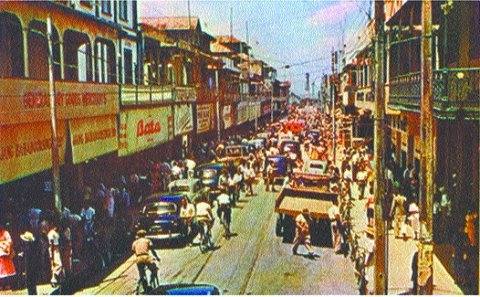

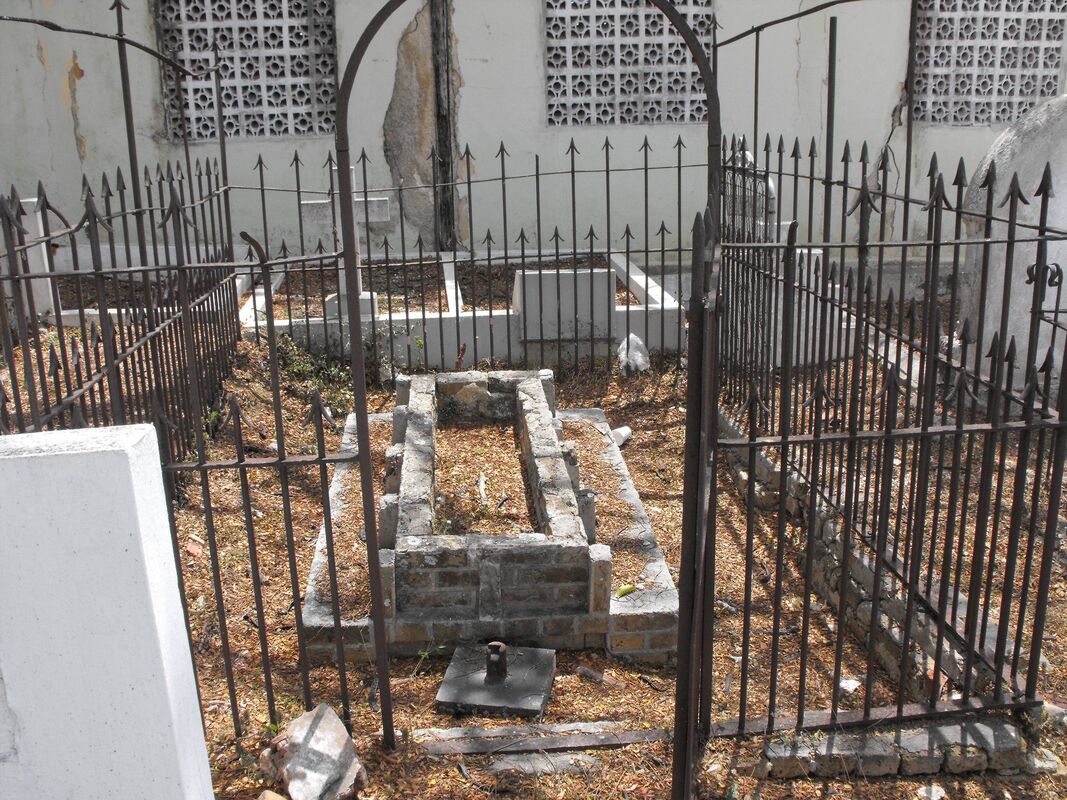
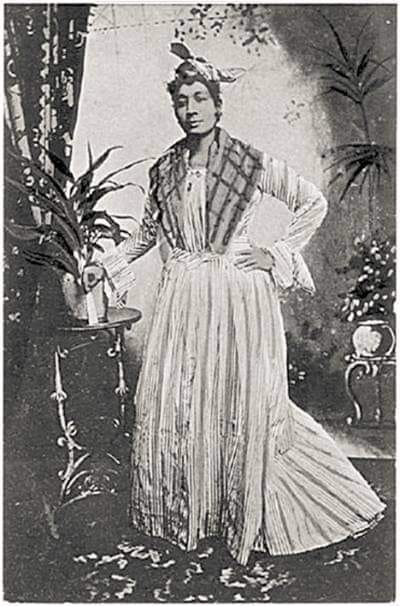


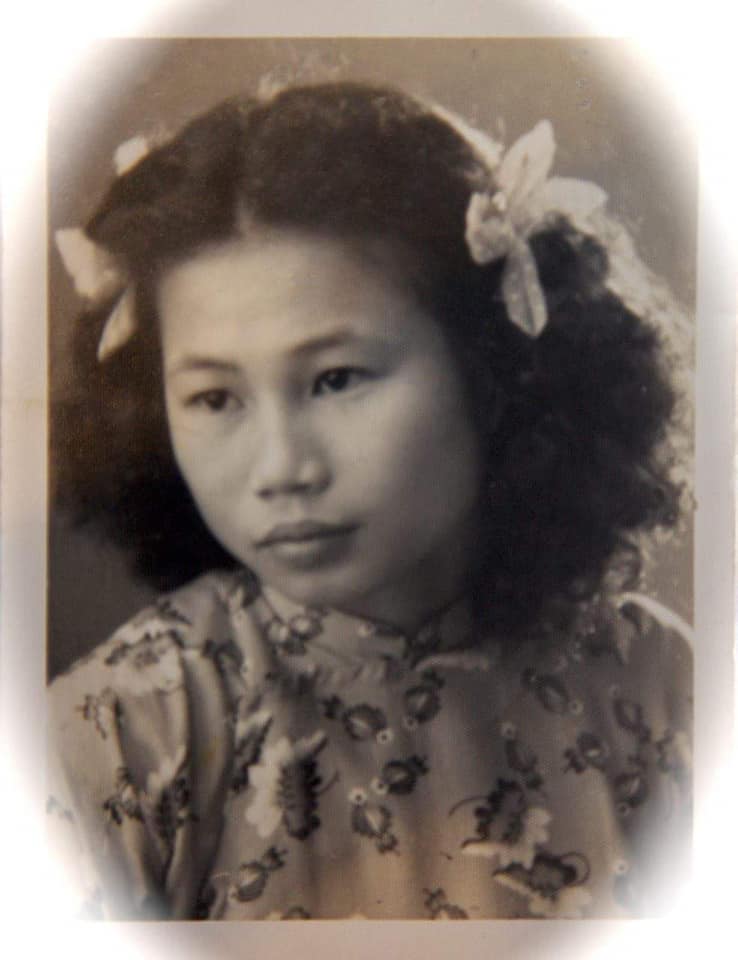
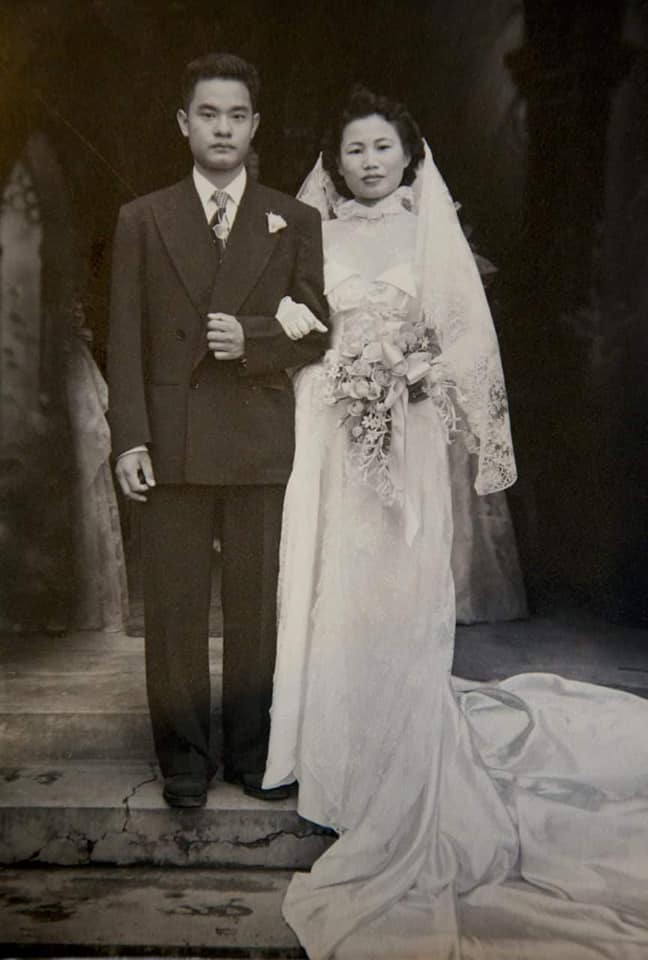
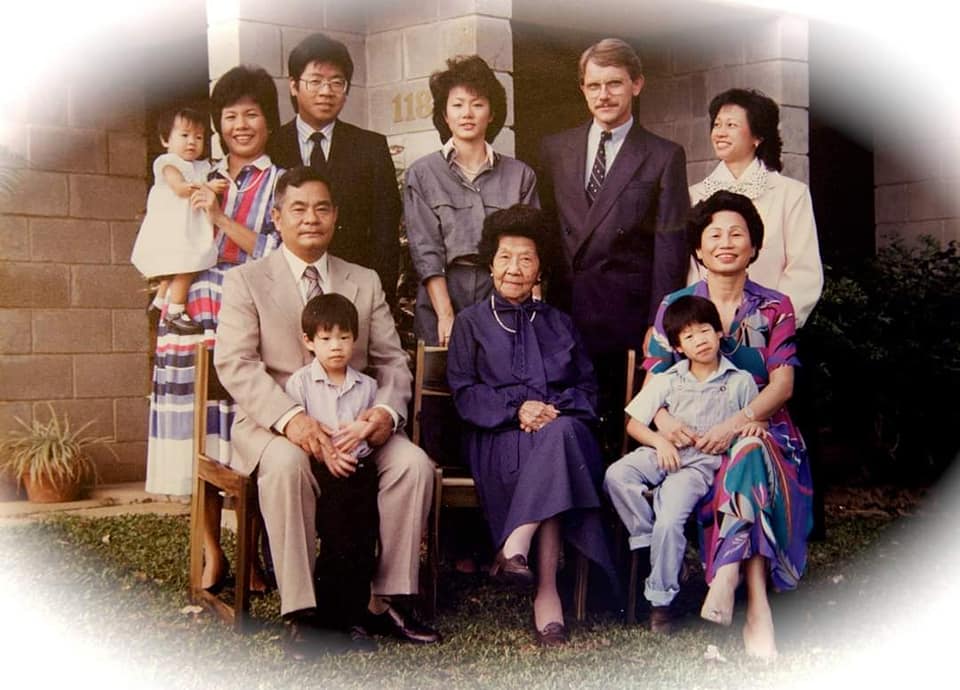
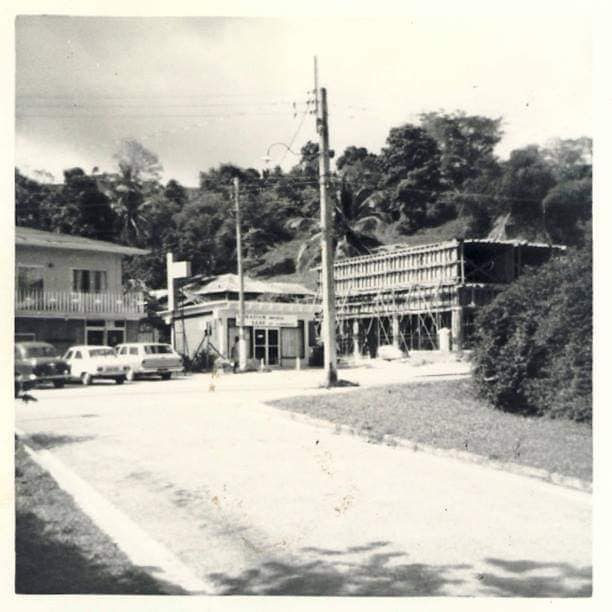


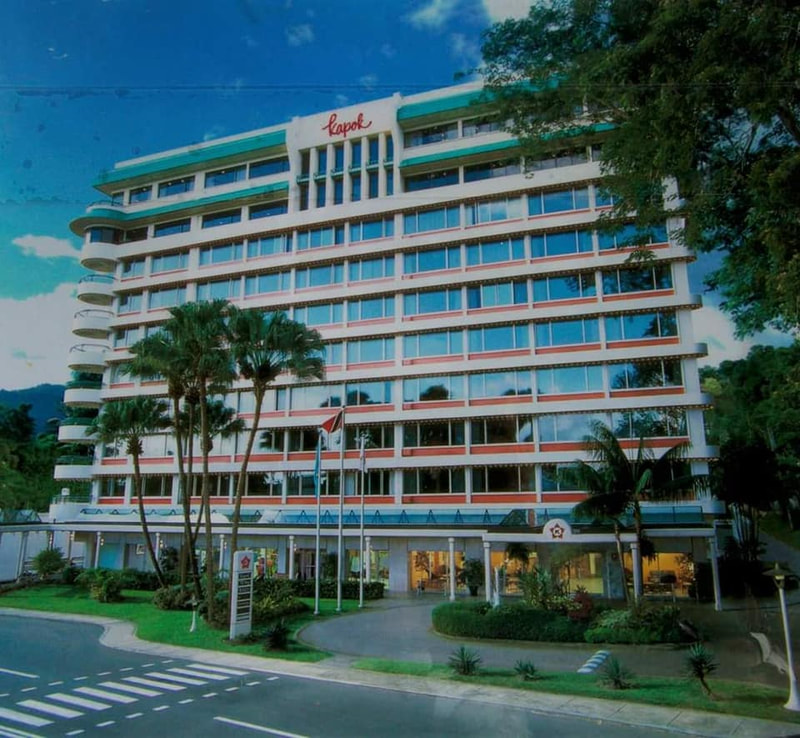

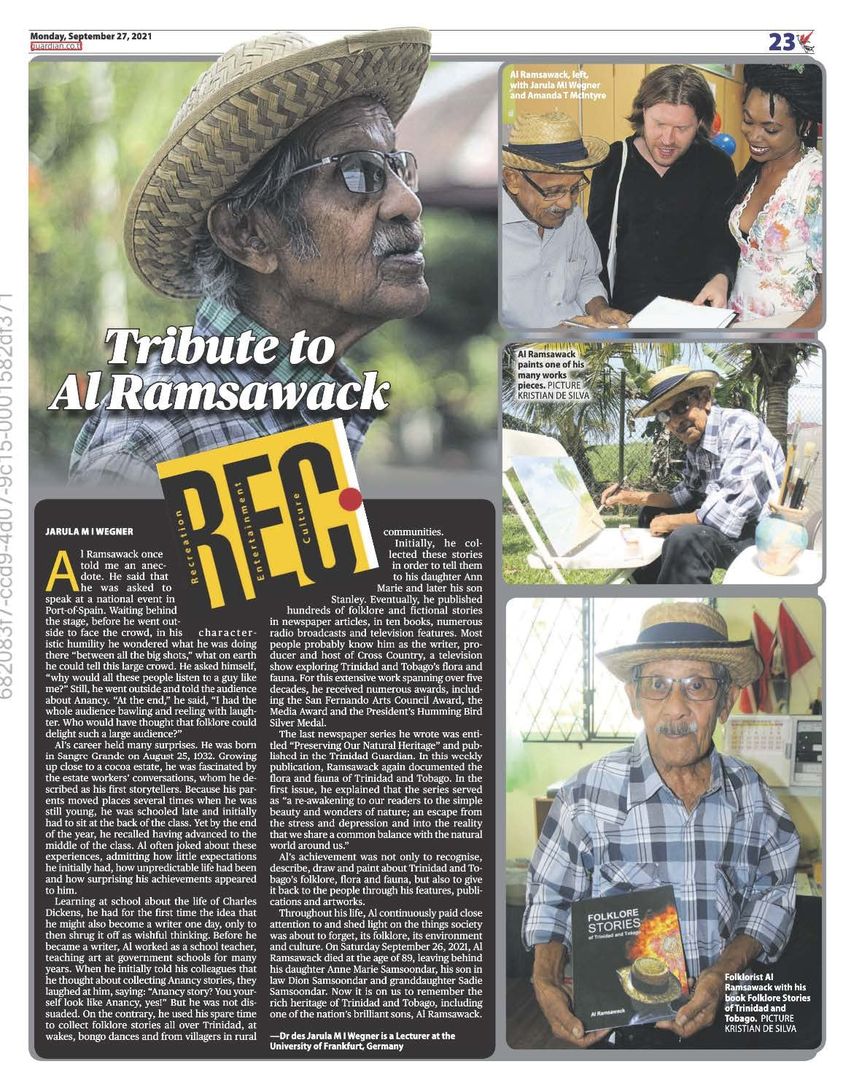



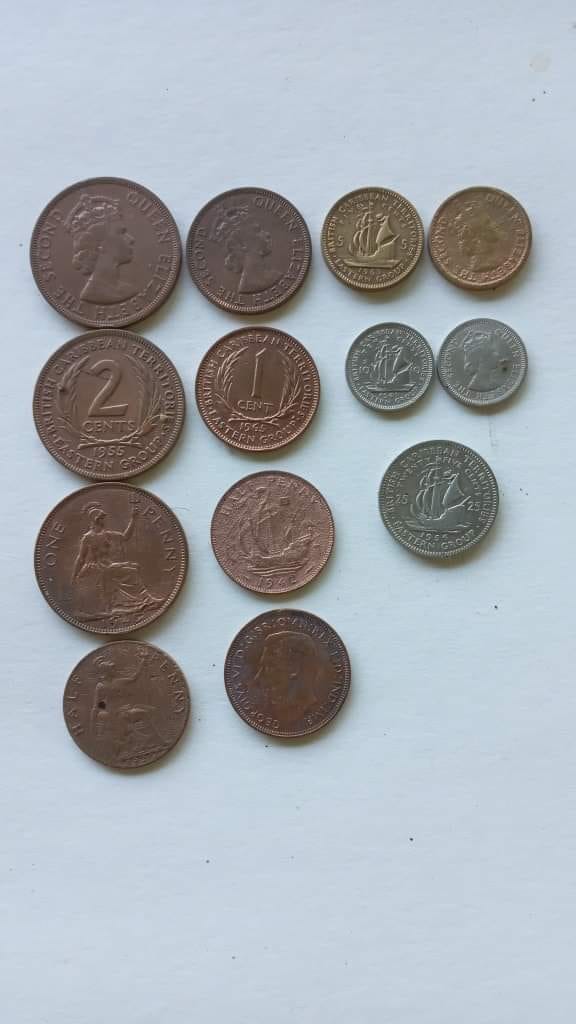

 RSS Feed
RSS Feed